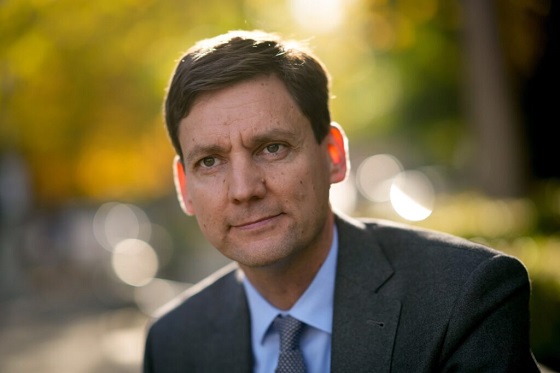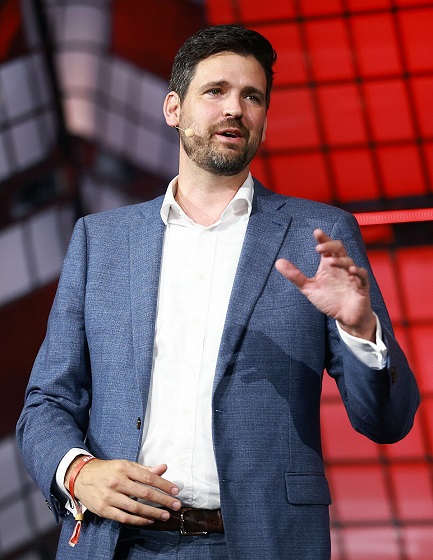Brownstone Institute
Flagellantism Is the New Political Ritual

From the Brownstone Institute
BY
The old FedEx envelope was clever, a work of art even, optimistic and colorful, signifying speed and progress. What a beautiful contrast to the plainness of the US Postal Service. For years, I can recall dropping off these treasures and paying maybe $10 to assure its delivery across the country, even the world. For me, it was a fabulous symbol of an improved life, living proof that progress was baked into the historical trajectory.
But two days ago, the clerk at the FedEx office confirmed a different ethos. There was no doing business without a scan of my government-issued ID. I asked for confirmation: so if I did not have this, there is simply no way that I can send a package. Confirmed.
Then came the envelope. It was the color of the brown bag I took to school when I was a kid. Serviceable, drab, dull. Also the new one is stamped with a big green marker: recyclable. There is no design, no art, certainly no beauty. It’s all gone. Its main message is suffering.
What happened to the old envelopes? They’ve been replaced, the clerk explained firmly, with no more detail.
A recycle exhortation suggests shortage. We have to reuse everything because there just isn’t enough to go around. We must sacrifice. The color suggests privation. It’s an aesthetic of sadness and penance. Then of course the price tag came: $26 for delivery not tomorrow but in two days. So compared with some years ago, we pay 2.5 times as much for service half as good as it was.
Don’t complain. It’s just the new way. It’s the new way of life.
What happened to progress? It’s been replaced. The new path is flagellantism: in politics, culture, economics, and everywhere.
The flagellants were a medieval movement of public penitents that roamed from town to town in garbs of woe, flogging themselves and begging as penance for pestilence and war. They were infused with a fiery, apocalyptic, and millenarian passion that they could see terrible moral realities to which others were blinded. The theory was that plagues were being visited upon the earth by God as punishment for sin. The answer was contribution, sorrow, and acts of penance as a means of appeasement, in order to make the bad times go away.
It’s true that there were people who did so in private but that was not the main point. The central focus and purpose of the flagellant movement was to make one’s suffering public and conspicuous, an early version of the virtue signal. In the guise of personal sorrow, they were really about spreading guilt to others. They would show up at any public celebration with a message: your happiness is causing our suffering. The more you party, the more we are forced to bear the burden of the need to be in pain for your sins. Your joy is prolonging the suffering of the world.
Flagellantry is most recognizable in the aesthetic. The first signs I recall seeing of this occurred immediately during the panic of March 2020 when it was proclaimed from on high that a terrible virus was visiting the US. No, you couldn’t see it, but it is highly dangerous, everywhere present, and should be avoided at all costs. You must wash constantly, douse yourself with sanitizer, cover your face, dress in drab colors, and be sad as much as possible.
Fun things were banned: public gatherings, singing, house parties, weddings, and all celebrations. This whole scene took on a political patina, as people were invited to think of the invisible virus as a symbol of a more tangible virus in the White House, an evil man who had invaded a holy space whose malice had leaked out in the culture and now threatened to poison everything. The more you complied with mandatory misery, the more your work made a contribution to making the pestilence go away while we wait for the inoculation. That could take two forms: driving him from the White House or releasing the vaccine which everyone would accept.
Joseph Campbell was correct about the role of religious impulses in the human mind. They never go away. They just take on different forms according to the style of the times. Every single feature of traditional religion found a new expression in the Covid religion. We had masking rituals that were rather complicated but learned and practiced quickly by multitudes: mask on while standing and mask off when sitting. We had sacramentals like social distancing and communion with vaccination. Our holy water became sanitizer and our prophets on earth were government bureaucrats like Fauci.
Flagellantism did not disappear once the old president left and the new one came. Even after the pandemic ended, there were new signs that God was angry. There was the ever-present climate change which was a sign of earth’s anger for being drilled and carved up for energy sources. And the bad country said to be responsible for the unwelcome invader of the White House – Russia – was now rampaging through the holy land of its neighbors.
In addition, the broader problem was capitalism itself, which gave us things like meat, gasoline, fur, and other signs of evil. And what gave rise to capitalism? The answer should be obvious: imperialism, colonialism, racism, and the existence of whiteness – each of which called for mass penance.
The pandemic unleashed it all. It was during this period that corporations decided that profitability alone required signs of suffering and hence the rise of ESG and DEI as new ways to assess economic value of corporate culture. And new practices were added to the list of the highly suspect: monogamy, heterosexuality, and religious traditions such as Christianity and Orthodox Judaism that should now be regarded as deprecated, even as part of the underlying problem.
It was during this period when I found myself on an apartment hunt and observed a newly remodeled offering. I asked why the owner had not replaced the flooring. I was corrected: these are new floors. Impossible, I thought. They are gray and ghastly. That’s the new fashion, I was told. Looking it up, it was true. Gray flooring was being installed everywhere.
How does wood become gray? It dies. It starts to decay. It is swept away by rivers and floats around for years, alternatively soaked, baked by the sun, and soaked again, until every bit of color is drained away. It becomes driftwood, a survivor of the elements and a symbol of the brutality of the cycle of life. Gray flooring is therefore the ideal symbol of the age of suffering, the proper material on which to move back and forth pondering the evils of the world.
In a world governed by flagellantism, ugly formlessness rises to replace aspirational art and imaginative creativity. This is why public art is so depressing and why even the clothing we can afford at the store all looks dreary and uniform. In this world, too, gender differences disappear as luxurious signs of decadence we can no longer afford.
Two other anecdotes. The overhead bins on the flight just now were largely empty, simply because most passengers chose the cheaper Basic Economy fare. This also requires they have no carry-on luggage and hence be forced to pay for checked luggage or travel with all their belongings in a backpack. We’ve gone from gigantic Louis Vuitton steamer trunks to stuffing things in pockets and hiding them from authorities.
Another case in point. I asked the man in the high-end shoe shop why none of the shoes had leather soles. Instead all shoes have these cushy rubber soles that seem weak and pathetic, and make no noise when one steps.
“Everything has changed since covid,” he said. “All shoes are house shoes now.”
I had no words and walked away, my entire thesis confirmed.
Sure enough, all the data we have suggests the mighty triumph of flagellantism. Fertility is down dramatically. Life spans are shortening. People are sicker. Excess deaths are rising. We learn less, read less, write less, create less, love less. Personal trauma is everywhere. The groceries are more expensive so we eat whatever we can, when we can, while hoping for breezes and whatever sunlight there is to provide just the essential energy we need to slog through another day.
Degrowth is the economic model of flagellantism, reducing consumption, embracing privation, acquiescing to austerity. We no longer declare recessions to be on their way because recession is the new way we live, the realization of the plan. The word recession implies a future of recovery, and that is not in the cards.
Decolonization is another watchword. It means feeling so guilty about the space you inhabit that your only moral action is to stay put and reflect on the sufferings of those you have displaced. You can of course say a prayer of supplication to them, so long as you never appropriate any aspect of their culture, since doing so would seem to affirm your rights as a human being.
You want joy, beauty, color, drama, adventure, and love? It’s not gone entirely. Park yourself on a yoga mat on your gray floor and open your computer. Stream something on one of many streaming services you have been provided. Or become a gamer. There you will find what you seek.
The experiences you seek you can only observe as an outsider looking in. It is not participatory. Same with sex: you are there to watch, not physically engage in with others, unless of course you embrace a gender identity other than that declared at your birth. Social distancing never went away; it is how we live in a new age of unending penance.
So, you see, it’s not just about eating bugs. It’s about a whole theory and practice of life and salvation itself, a new religion to replace all the old ones. Cough up your government-issued ID, send your package if you must, think twice before complaining about anything on social media, and figure out a way to channel your depression and despair into quiet humble gratitude and acquiescence. Don’t forget to recycle. The flagellants have taken over the world.
Author
Brownstone Institute
Bizarre Decisions about Nicotine Pouches Lead to the Wrong Products on Shelves

From the Brownstone Institute
A walk through a dozen convenience stores in Montgomery County, Pennsylvania, says a lot about how US nicotine policy actually works. Only about one in eight nicotine-pouch products for sale is legal. The rest are unauthorized—but they’re not all the same. Some are brightly branded, with uncertain ingredients, not approved by any Western regulator, and clearly aimed at impulse buyers. Others—like Sweden’s NOAT—are the opposite: muted, well-made, adult-oriented, and already approved for sale in Europe.
Yet in the United States, NOAT has been told to stop selling. In September 2025, the Food and Drug Administration (FDA) issued the company a warning letter for offering nicotine pouches without marketing authorization. That might make sense if the products were dangerous, but they appear to be among the safest on the market: mild flavors, low nicotine levels, and recyclable paper packaging. In Europe, regulators consider them acceptable. In America, they’re banned. The decision looks, at best, strange—and possibly arbitrary.
What the Market Shows
My October 2025 audit was straightforward. I visited twelve stores and recorded every distinct pouch product visible for sale at the counter. If the item matched one of the twenty ZYN products that the FDA authorized in January, it was counted as legal. Everything else was counted as illegal.
Two of the stores told me they had recently received FDA letters and had already removed most illegal stock. The other ten stores were still dominated by unauthorized products—more than 93 percent of what was on display. Across all twelve locations, about 12 percent of products were legal ZYN, and about 88 percent were not.
The illegal share wasn’t uniform. Many of the unauthorized products were clearly high-nicotine imports with flashy names like Loop, Velo, and Zimo. These products may be fine, but some are probably high in contaminants, and a few often with very high nicotine levels. Others were subdued, plainly meant for adult users. NOAT was a good example of that second group: simple packaging, oat-based filler, restrained flavoring, and branding that makes no effort to look “cool.” It’s the kind of product any regulator serious about harm reduction would welcome.
Enforcement Works
To the FDA’s credit, enforcement does make a difference. The two stores that received official letters quickly pulled their illegal stock. That mirrors the agency’s broader efforts this year: new import alerts to detain unauthorized tobacco products at the border (see also Import Alert 98-06), and hundreds of warning letters to retailers, importers, and distributors.
But effective enforcement can’t solve a supply problem. The list of legal nicotine-pouch products is still extremely short—only a narrow range of ZYN items. Adults who want more variety, or stores that want to meet that demand, inevitably turn to gray-market suppliers. The more limited the legal catalog, the more the illegal market thrives.
Why the NOAT Decision Appears Bizarre
The FDA’s own actions make the situation hard to explain. In January 2025, it authorized twenty ZYN products after finding that they contained far fewer harmful chemicals than cigarettes and could help adult smokers switch. That was progress. But nine months later, the FDA has approved nothing else—while sending a warning letter to NOAT, arguably the least youth-oriented pouch line in the world.
The outcome is bad for legal sellers and public health. ZYN is legal; a handful of clearly risky, high-nicotine imports continue to circulate; and a mild, adult-market brand that meets European safety and labeling rules is banned. Officially, NOAT’s problem is procedural—it lacks a marketing order. But in practical terms, the FDA is punishing the very design choices it claims to value: simplicity, low appeal to minors, and clean ingredients.
This approach also ignores the differences in actual risk. Studies consistently show that nicotine pouches have far fewer toxins than cigarettes and far less variability than many vapes. The biggest pouch concerns are uneven nicotine levels and occasional traces of tobacco-specific nitrosamines, depending on manufacturing quality. The serious contamination issues—heavy metals and inconsistent dosage—belong mostly to disposable vapes, particularly the flood of unregulated imports from China. Treating all “unauthorized” products as equally bad blurs those distinctions and undermines proportional enforcement.
A Better Balance: Enforce Upstream, Widen the Legal Path
My small Montgomery County survey suggests a simple formula for improvement.
First, keep enforcement targeted and focused on suppliers, not just clerks. Warning letters clearly change behavior at the store level, but the biggest impact will come from auditing distributors and importers, and stopping bad shipments before they reach retail shelves.
Second, make compliance easy. A single-page list of authorized nicotine-pouch products—currently the twenty approved ZYN items—should be posted in every store and attached to distributor invoices. Point-of-sale systems can block barcodes for anything not on the list, and retailers could affirm, once a year, that they stock only approved items.
Third, widen the legal lane. The FDA launched a pilot program in September 2025 to speed review of new pouch applications. That program should spell out exactly what evidence is needed—chemical data, toxicology, nicotine release rates, and behavioral studies—and make timely decisions. If products like NOAT meet those standards, they should be authorized quickly. Legal competition among adult-oriented brands will crowd out the sketchy imports far faster than enforcement alone.
The Bottom Line
Enforcement matters, and the data show it works—where it happens. But the legal market is too narrow to protect consumers or encourage innovation. The current regime leaves a few ZYN products as lonely legal islands in a sea of gray-market pouches that range from sensible to reckless.
The FDA’s treatment of NOAT stands out as a case study in inconsistency: a quiet, adult-focused brand approved in Europe yet effectively banned in the US, while flashier and riskier options continue to slip through. That’s not a public-health victory; it’s a missed opportunity.
If the goal is to help adult smokers move to lower-risk products while keeping youth use low, the path forward is clear: enforce smartly, make compliance easy, and give good products a fair shot. Right now, we’re doing the first part well—but failing at the second and third. It’s time to fix that.
Addictions
The War on Commonsense Nicotine Regulation

From the Brownstone Institute
Cigarettes kill nearly half a million Americans each year. Everyone knows it, including the Food and Drug Administration. Yet while the most lethal nicotine product remains on sale in every gas station, the FDA continues to block or delay far safer alternatives.
Nicotine pouches—small, smokeless packets tucked under the lip—deliver nicotine without burning tobacco. They eliminate the tar, carbon monoxide, and carcinogens that make cigarettes so deadly. The logic of harm reduction couldn’t be clearer: if smokers can get nicotine without smoke, millions of lives could be saved.
Sweden has already proven the point. Through widespread use of snus and nicotine pouches, the country has cut daily smoking to about 5 percent, the lowest rate in Europe. Lung-cancer deaths are less than half the continental average. This “Swedish Experience” shows that when adults are given safer options, they switch voluntarily—no prohibition required.
In the United States, however, the FDA’s tobacco division has turned this logic on its head. Since Congress gave it sweeping authority in 2009, the agency has demanded that every new product undergo a Premarket Tobacco Product Application, or PMTA, proving it is “appropriate for the protection of public health.” That sounds reasonable until you see how the process works.
Manufacturers must spend millions on speculative modeling about how their products might affect every segment of society—smokers, nonsmokers, youth, and future generations—before they can even reach the market. Unsurprisingly, almost all PMTAs have been denied or shelved. Reduced-risk products sit in limbo while Marlboros and Newports remain untouched.
Only this January did the agency relent slightly, authorizing 20 ZYN nicotine-pouch products made by Swedish Match, now owned by Philip Morris. The FDA admitted the obvious: “The data show that these specific products are appropriate for the protection of public health.” The toxic-chemical levels were far lower than in cigarettes, and adult smokers were more likely to switch than teens were to start.
The decision should have been a turning point. Instead, it exposed the double standard. Other pouch makers—especially smaller firms from Sweden and the US, such as NOAT—remain locked out of the legal market even when their products meet the same technical standards.
The FDA’s inaction has created a black market dominated by unregulated imports, many from China. According to my own research, roughly 85 percent of pouches now sold in convenience stores are technically illegal.
The agency claims that this heavy-handed approach protects kids. But youth pouch use in the US remains very low—about 1.5 percent of high-school students according to the latest National Youth Tobacco Survey—while nearly 30 million American adults still smoke. Denying safer products to millions of addicted adults because a tiny fraction of teens might experiment is the opposite of public-health logic.
There’s a better path. The FDA should base its decisions on science, not fear. If a product dramatically reduces exposure to harmful chemicals, meets strict packaging and marketing standards, and enforces Tobacco 21 age verification, it should be allowed on the market. Population-level effects can be monitored afterward through real-world data on switching and youth use. That’s how drug and vaccine regulation already works.
Sweden’s evidence shows the results of a pragmatic approach: a near-smoke-free society achieved through consumer choice, not coercion. The FDA’s own approval of ZYN proves that such products can meet its legal standard for protecting public health. The next step is consistency—apply the same rules to everyone.
Combustion, not nicotine, is the killer. Until the FDA acts on that simple truth, it will keep protecting the cigarette industry it was supposed to regulate.
-

 Energy2 days ago
Energy2 days agoEby should put up, shut up, or pay up
-

 Business2 days ago
Business2 days agoPulling back the curtain on the Carney government’s first budget
-

 Daily Caller2 days ago
Daily Caller2 days agoUS Eating Canada’s Lunch While Liberals Stall – Trump Admin Announces Record-Shattering Energy Report
-

 Business2 days ago
Business2 days agoThe Liberal budget is a massive FAILURE: Former Liberal Cabinet Member Dan McTeague
-

 Business1 day ago
Business1 day agoCarney’s budget spares tax status of Canadian churches, pro-life groups after backlash
-

 COVID-191 day ago
COVID-191 day agoFreedom Convoy leader Tamara Lich to appeal her recent conviction
-

 Justice1 day ago
Justice1 day agoCarney government lets Supreme Court decision stand despite outrage over child porn ruling
-

 espionage21 hours ago
espionage21 hours agoU.S. Charges Three More Chinese Scholars in Wuhan Bio-Smuggling Case, Citing Pattern of Foreign Exploitation in American Research Labs












